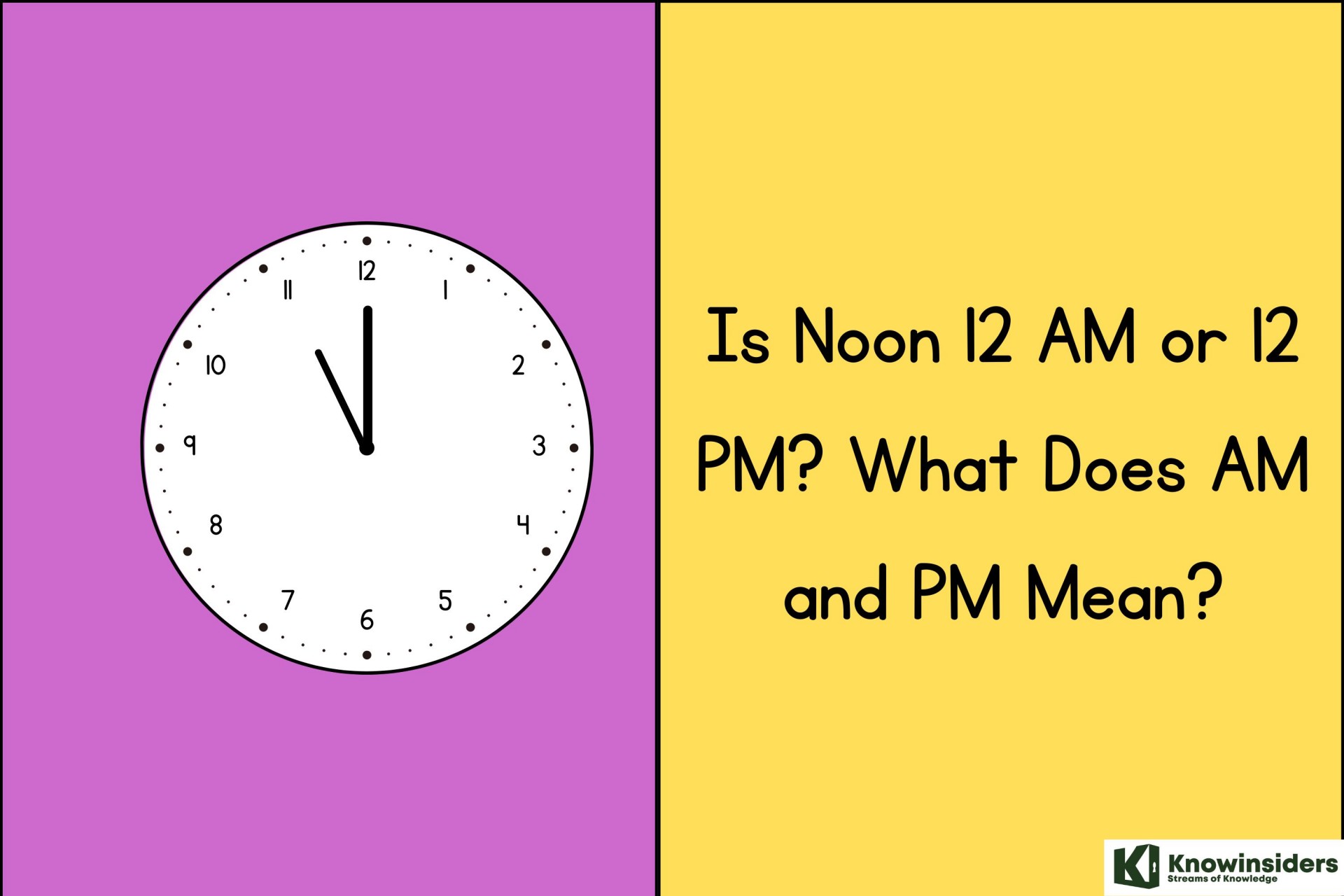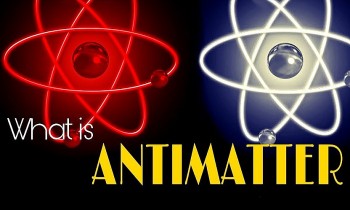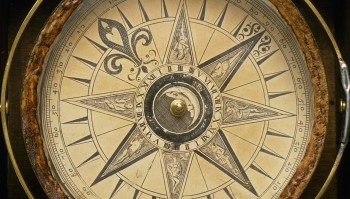Is Noon 12 AM or 12 PM? What Does AM and PM Mean?
| Contents |
In our daily lives, we often glance at the clock without giving much thought to the conventions behind it.
One common area of confusion is whether noon is designated as 12 AM or 12 PM. To clear up any misunderstandings: noon is 12 PM and midnight is 12 AM.
But why does this matter, and how does it tie into broader concepts like the 24-hour clock and global timekeeping standards? Let’s dive deeper into these intricacies.
Learn more: How To Calculate Time For Different Time Zones - Surprising Facts About Time Zones
 |
| Is Noon 12 AM or 12 PM? What Does AM and PM Mean? |
Why Does This Matter?
Understanding these formats is crucial not just for personal scheduling but also in professional and international contexts. Mistakes in time conversion can lead to missed flights, conference calls at odd hours, and even medical scheduling errors. As global interaction increases, so does the importance of precise and universally understood timekeeping practices.
Why Does the Day Have 24 Hours?
A standard day is 24 hours, based on the Earth’s rotation. This period is divided into two cycles on the 12-hour clock and counted continuously in the 24-hour format.
It is believed that the day was divided into 24 equal parts by the Egyptians. According to one account, this custom came about as a result of the Egyptians using base 12, which involved counting the three joints in their fingers (excluding the thumb).
Learn more: How Many Time Zones Are in The US?
Origins of AM and PM
The terms "AM" and "PM" are steeped in history, deriving from Latin phrases that have been used for centuries to differentiate the two 12-hour segments of the day:
AM (Ante Meridiem): Literally translating to "before midday," AM covers the period from midnight to just before noon.
PM (Post Meridiem): Meaning "after midday," PM begins at noon and runs until just before midnight.
12-Hour Clock vs. 24-Hour Clock
The 12-hour clock, with its AM and PM designations, is commonplace in several countries. However, confusion often arises at the pivotal points of 12 AM and 12 PM. To alleviate such confusion, many sectors (military, aviation, international business, etc.) use the 24-hour clock format.
12-hour Clock
The first twelve digits of the 12-hour clock are followed by am and pm. Every hour of the day is also represented by this clock. A day requires two full rotations of the clock's hour hand.
6 p.m. would be in the evening if we assume that 6 a.m. is early in the morning. It is the afternoon at 2 P.M. if 2 A.M. is after midnight.
To indicate the ante meridiem, we can use any abbreviation, such as am, a.m., AM, or A.M. The acronym for post meridiem, on the other hand, is pm, p.m., PM, or P.M.
24-hour Clock
A 24-hour clock is a digital timepiece in which 0:00 denotes the beginning of each new day. A 24-hour clock resets to 00:00 at 23:59. The hours 1 through 12 are not repeated when using a 24-hour clock; instead, the indications of am and pm are not used.
For instance, in 24-hour clock format, we can recognize the time as 03:15 rather than quarter past three in the morning or 3:15 A.M.
Converting Times Between 12-hour and 24-hour Formats
Conversion is straightforward:
→ For AM hours, the time remains the same, with 12 AM converted to 00:00.
→ For PM hours, simply add 12 to the hour. Thus, 1 PM becomes 13:00, continuing up to 11 PM which converts to 23:00. Notably, 12 PM is simply 12:00.
Fascinating Facts about Time• There were actually 370 days in a year when dinosaurs roamed the earth—as opposed to the 365 days we have today. This is because we are gradually losing days as a result of the Earth's rotation becoming slower. • In comparison to Earthly time, a day spans two years on the planet Mercury. • In reality, a day lasts 23 hours, 56 minutes, and 4.2 seconds, not 24. This is the actual time it takes for the Earth to revolve. • A year is made up of 31,566,926 seconds. • In an effort to increase productivity, Joseph Stalin outlawed weekends in Soviet Russia in 1930. After being implemented in 1931, this was eventually changed to a 7-day workweek ten years later! • We use standard London time for time in the UK today because of the Great Western Railway. Throughout the 19th century, time was perceived differently in every part of the United Kingdom. Thus, for instance, noon in Sheffield was not the same as noon in Bristol. People kept missing their connecting trains, so this was figured out. With the establishment of the Great Western Railway, this was stopped and London time was adopted nationwide. • Around the world, 250 babies are born every minute. That is five infants every second. • Every 5 seconds, McDonald's sells 375 hamburgers. |
 |
| AM and PM |
Clarifying Noon and Midnight
Is noon 12 AM or PM?
Noon is 12 PM. This designation follows the logical progression of the 12-hour clock, where the hours after midnight build up from 12 AM to 11 AM, culminating in noon as 12 PM. Similarly, the cycle post-noon starts at 12:01 PM and counts up to 11:59 PM, resetting at midnight, which is marked as 12 AM.
We can say with certainty what the sun is just before and just after passing the meridian, even though there is uncertainty based on the definitions of AM and PM because at 12:00 noon the sun is on the meridian and neither before nor after it. Let's look at both scenarios to see how it functions when 12:00 noon is AM and when it is PM. Just before 12:00 noon is AM, and just after is PM. To determine which makes the most sense, let's try both:
- If 12:00 noon is 12:00 AM
Time would progress as: 11:59AM, 12:00 AM, 12:01 PM.
This does not look right as 12 o’clock starts as AM then goes to PM.
- If 12:00 noon is 12:00 PM
Time progresses as: 11:59 AM, 12:00 PM, 12:01 PM.
This looks right as all minutes in the hour have the same PM indicator.
Is it midnight 12 AM or PM?
Applying the same logic to PM, we can all agree that 1:00 AM is morning. Since the sun is unquestionably ahead of the meridian (ante meridian), one minute prior to this must be 12:59 AM. Thus, midnight is 12:00AM, and the early morning hours are 12:01–12:59 AM. So, is Tuesday at 12:00 AM midnight on Monday or Tuesday at midnight on Tuesday? Is it morning or is it night?
Why the Confusion?
The confusion often arises from the reset that happens at midnight and noon. While it's clear that 1 AM follows shortly after midnight, the designation of midnight itself as 12 AM and noon as 12 PM can seem counterintuitive. This confusion is further compounded in digital and analog clocks that do not explicitly state AM or PM, leaving it to the context or user knowledge to determine the correct period of the day.
Global Timekeeping: When AM and PM are Not Used
In many parts of the world, particularly in sectors that require precision and clarity (like the military and transportation industries), the 24-hour clock is preferred. This format, often referred to as "military time" in the U.S., avoids the ambiguities associated with AM and PM by clearly delineating the hour of the day from 00:00 to 23:59.
AM and PM in military time
Coordination of military operations necessitates a clear and accurate understanding of time. Since solar days are the primary timekeeping unit, military establishments use a 24-hour clock format without hourly and minute increments. For example, military time indicates 1200, which should be pronounced as twelve hundred, as opposed to noon or 12 PM (civilian time). In radio communication, time is also indicated using the same pronunciation. The most precise way to refer to time and utilize it for scheduling and navigation is in this format.
Educational Emphasis
Educators and timekeeping experts suggest that awareness and education on the proper use of AM and PM can reduce misunderstandings in scheduling, transportation, and global communications. As we continue to operate in a highly connected world, the precise understanding and usage of these terms are more critical than ever.
In summary, when planning activities or setting meetings around these pivotal times of the day, remembering the correct designation—12 PM for noon and 12 AM for midnight—ensures clarity and helps keep our daily schedules on track. Whether you're setting an alarm, catching a train, or scheduling an international call, getting the AM and PM right keeps everyone on the same page.
Final Thoughts
Whether you're setting an alarm for 7:00 AM or scheduling a meeting for 15:00, understanding the nuances of the 12-hour and 24-hour time systems can help navigate daily activities and global interactions more smoothly. Remembering that noon is 12 PM and midnight is 12 AM, and knowing how to convert these times into a 24-hour format, ensures clarity and prevents the common confusion that can disrupt our schedules and operations.
Through this exploration of timekeeping, we see that something as simple as knowing when to use AM and PM can have significant implications across various facets of life. As our world grows smaller with each technological advancement, mastering these details becomes not just useful, but essential.
FAQsWhere Is the 12-Hour Format Used?The majority of nations on the planet now operate on a 24-hour schedule. However, a number of nations, including the US, Canada (apart from Quebec), Australia, New Zealand, and the Philippines, officially use the 12-hour format, which includes am and pm. Do AM and PM need to be capitalized?It is customary to not capitalize the words am and pm when they are used in a sentence. Furthermore, we wouldn't say "this afternoon pm" because the phrase "afternoon" already indicates the time, so it's not necessary to use am and pm when the time is already indicated. People often struggle to understand time because it's such a vast concept. When we associate pm with nighttime, it can be perplexing to learn that 12 pm actually refers to the middle of the day. A helpful way to keep this in mind is that, although it seems like the middle of the night to most, 12 a.m. marks the beginning of a new day and the change in the date. What other ways are there to say "a.m." and "p.m."?If you find that using "a.m." or "p.m." is becoming monotonous, consider the following 1910s slang instead: When someone said they intended to catch the train at seven o'clock pip emma, they meant seven p.m. Telephone operators in the early 20th century used pip emma to signal p.m. and ack emma to signal a.m. Eventually, as alternatives to afternoon and morning, both expressions—which the military is credited with coining, according to Green's Dictionary of Slang—entered the public discourse. |
 What Is Antimatter, Why Is It The Most Expensive Material On Earth? What Is Antimatter, Why Is It The Most Expensive Material On Earth? Do you know that the most expensive substance on Earth costs $62 trillion for just one gram? Check out the article for full details. |
 What Is Difference Between True North and Magnetic North? What Is Difference Between True North and Magnetic North? What is the difference between True North and Magnetic North? Is there any secret behind them? Check out the article to know the answers. |
 Palmistry: What Do Index Finger Lines Reveal Your Life's Destiny? Palmistry: What Do Index Finger Lines Reveal Your Life's Destiny? What Do the Lines on Your Fingers Mean? According to Eastern physiognomy, the direction of an individual's index finger can predict their good or bad ... |


























